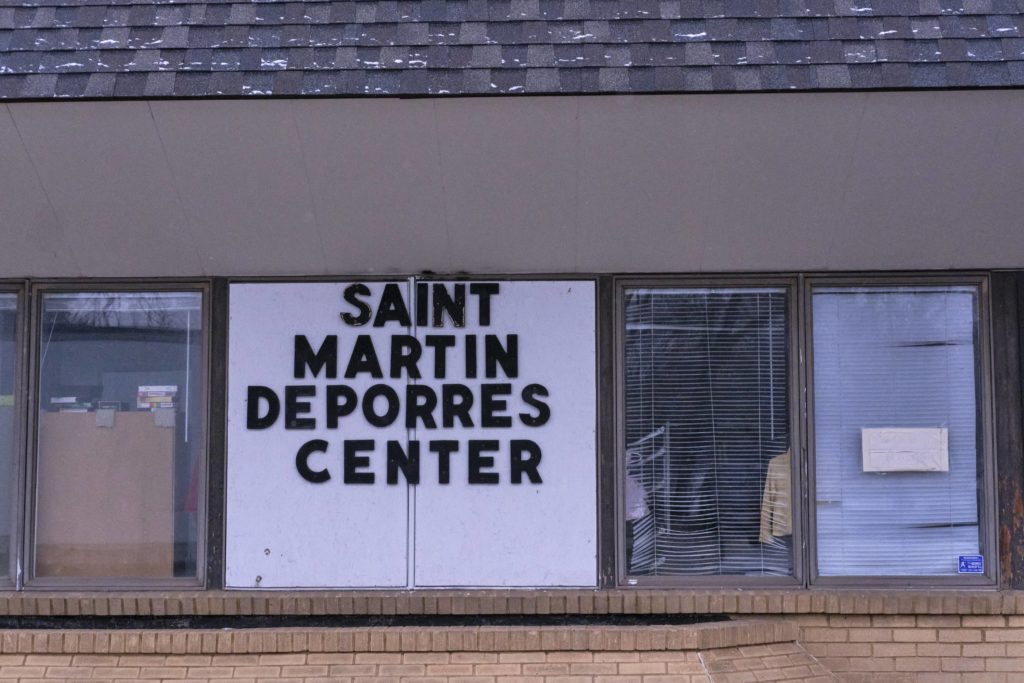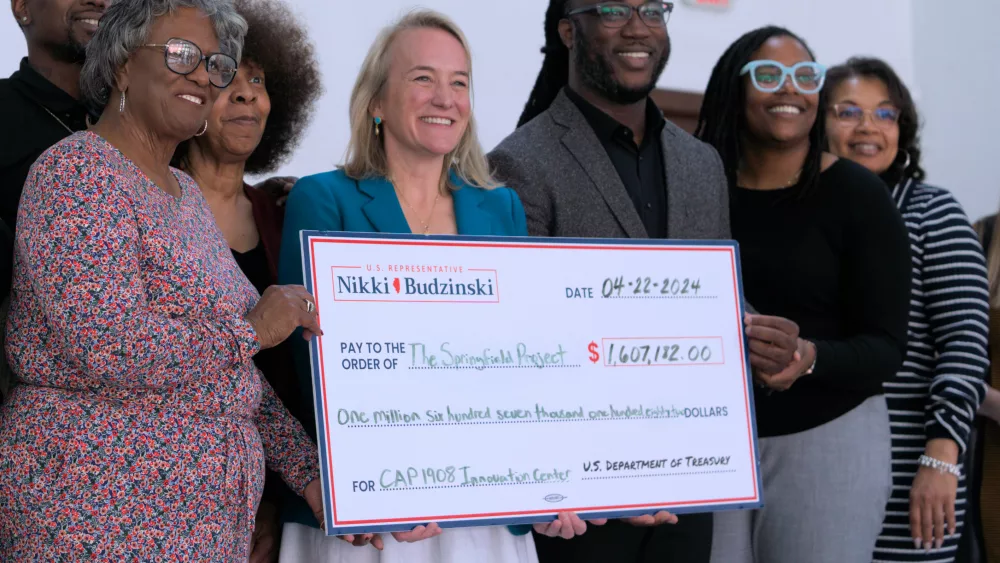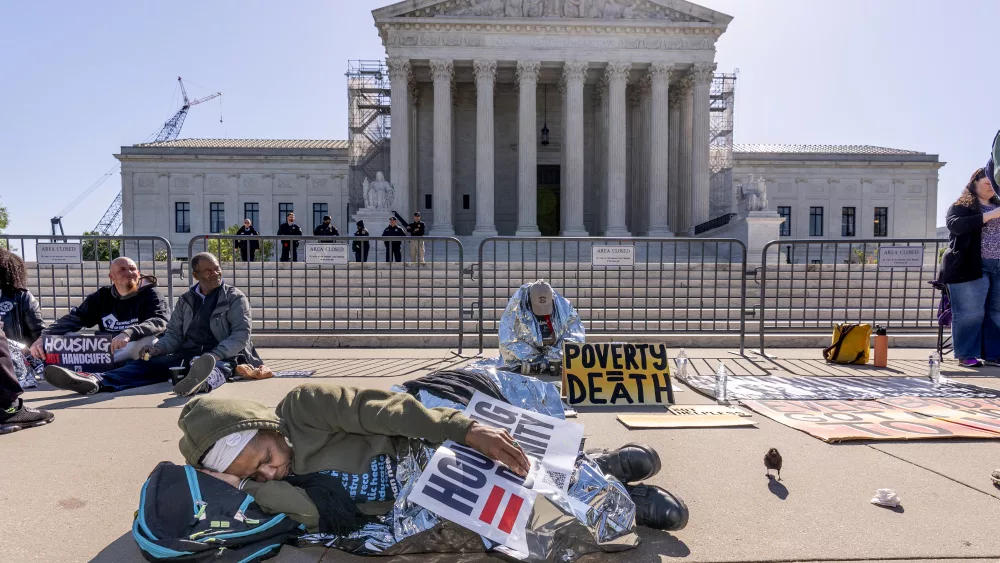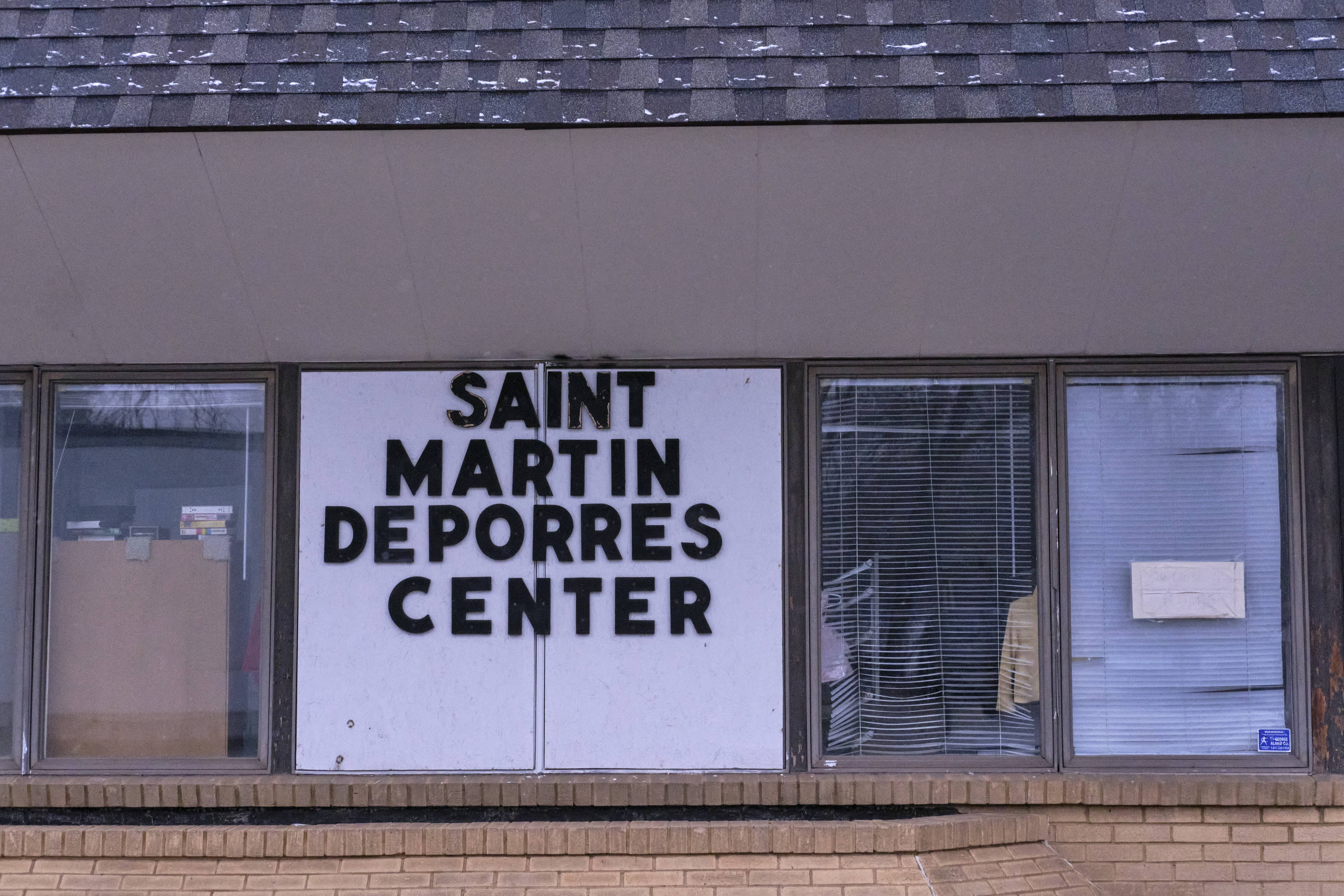
Get the latest news: Subscribe Now
The city of Springfield has hidden gems and treasures around each and every bend; St. Martin de Porres – located at 1725 S. Grand. Ave across the street from St. Patrick Catholic Church – is just such a gem, to be sure. It might not look like much from the outside, but when one enters right after the doors have been closed for the day, one instantly understands what such a place rightfully means to the community.
Jim Bertolino – also known as “Bert” – greets us when we arrive at approximately 11:30 in the morning, and the retired disability adjudicator seems in quite good spirits. He actively helps to run the food pantry, and also drives the pantry truck and trailer to the food bank – he was so kind as to be WMAY’s tour guide around the pantry when we finally made it down there.
He discusses how slow the very part of the building we are standing in – the entryway between the thrift portion of the building and the food pantry portion – was but an hour ago. “Only had about 60 people today – but every day is different, you know.”
When one enters the St. Martin de Porres Food Pantry – as you walk through the clothing section, into a child’s section of books and an adult book section, into the back area where the likes of Jerry, Helen, Pat, Sarah, and Linda are still hard at work – one cannot help but notice that it looks strikingly similar to an old diner with most of the innards removed.
Another gentleman that we meet as we tour the pantry, Jerry – one of the longest serving members of the Food Pantry – mentions how the pantry was formerly a Hardees before someone was shot in the drive-through; this explanation made sense of the aforementioned old diner sensation, as well as the lone, happy, red booth that remains as you walk back into the volunteer work stations of the food pantry.
Pat and Helen – like Jerry – have been working at the St. Martin de Porres Food Pantry for over two decades at this point, and they are able to communicate vividly and with great excitement the history of the food pantry, how it began, its mission, and how it operates to this very day.
While Pat walks over into the rest of the food pantry to grab an old brochure describing the history of St. Martin de Porres – the “lay brother” and the food pantry, Jim gives us a summary of his own concerning each.
“St Martin de Porres was a lay brother whose claim to fame was that he could talk to animals, was kind to humans, and could float or levitate. The building we are in now was a Hardee’s restaurant where a man was shot at one time. After some time elapsed – the Hardees chose not to reopen – a nun, Sister Dominic, managed to talk a group of men – including Jim Brahler – into starting a food pantry. The building is now owned by Katherine Drexel Parish, but the ministry is not Catholic, it is ecumenical – we serve all kinds.”
As Pat returns with the brochure, everyone reconverges upon the point of who precisely receives help each week. Like Patrick McConnell and Jerry of the Catholic Charities before them, Jim, Jerry, Pat, Helen, Sarah, and Linda were all clear as could be that the majority of the folks that they serve each day and week are the low-income, food insecure of the community – not, as many might suspect, the homeless.
The word misconception comes up here as it did in the previous interview trip. And, in fact, when one considers it, the notion actually does seem illogical to have believed at all. Where will those without shelter store their fifty-pound box of weekly supplies? How is it reasonable to suspect that a person or people could or would carry around supplies that they picked up, and that those supplies could stay safe, and secure, as well, as in the proper temperatures? How would those without a home cook much of which is provided by the pantries even?
Meanwhile, Jim – Bert from here on out – states that “most of the people we serve are the “working poor” – with many having two jobs; still, they require help to make it by each week. We provide around 450 families – plus individuals – with a fifty or more pound box of food once per week, and we also provide clothing, including suits and some uniforms for people; Wednesday morning is usually our biggest day because we regularly have produce – such as potatoes, onions, etc. – then.” Both Sarah and Jerry also have insights into the daily workings of the pantry too.
Sarah made sure to note that the “majority – 50% to 80%” – of the pantry’s clientele are not homeless, while Jerry claims that it could very well be between 80% and 90% that are working people whose jobs do not pay them wages sufficient to afford the simple, basic necessities of life.
After some good chat and discussion, Jim brought us away from the work stations where volunteers were prepping for the following day, and towards the clothing sorting room, as well as towards the food and people processing portions of the building. He mentions as we walk that the pantry takes donations of food as well as money – of which is needed for repairs and innovations upon the old building and sparsely decorated grounds.
By the time we arrive at where the food boxes are put together by the dedicated volunteers both present during our visit and absent, the conversation had shifted from administrative and statistical discussions to those concerning the practical process of how the food pantry operates.
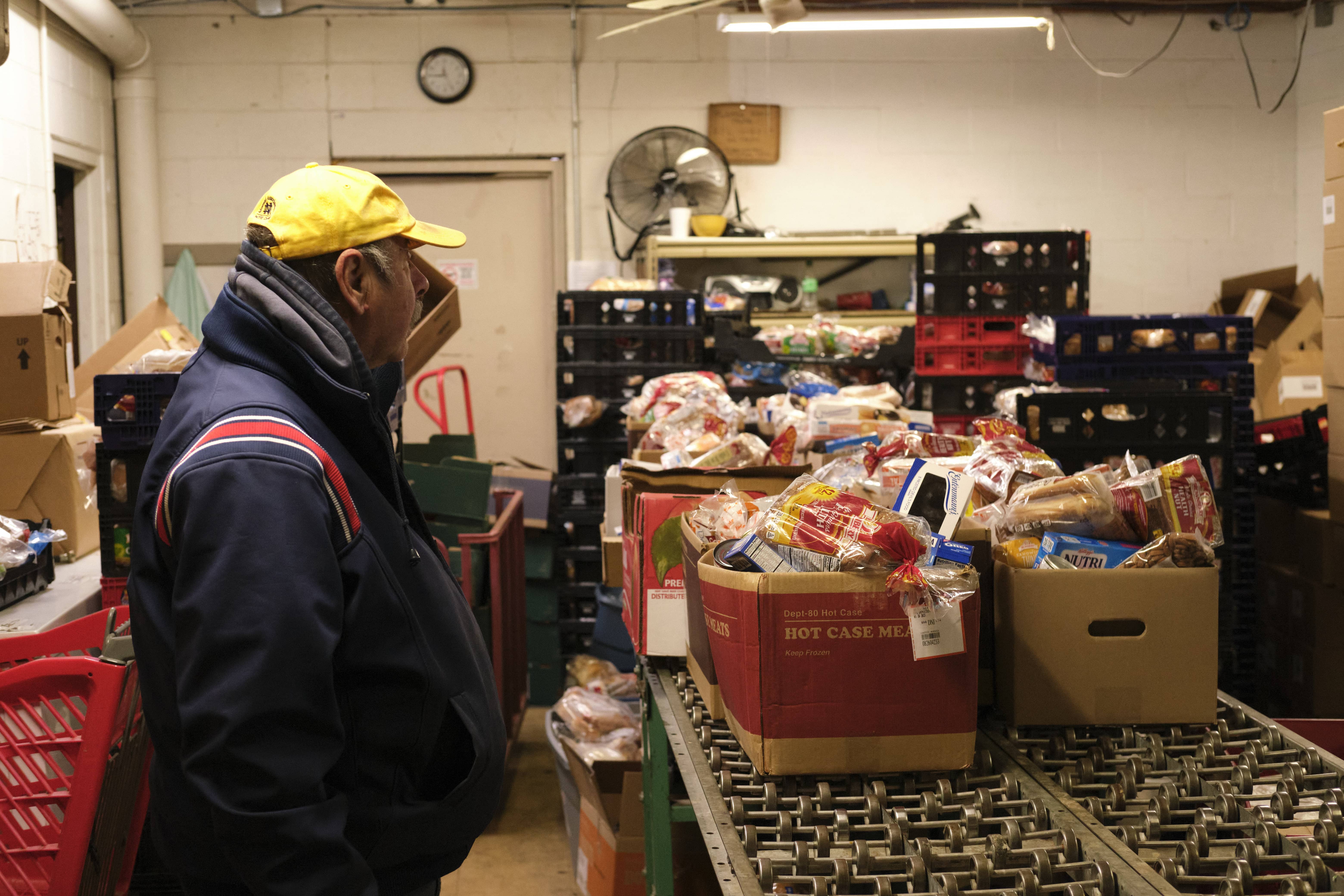
Food is loaded into these boxes, and provided to the people as they come through the pantry. First, it’s the dry and canned goods, or else the foods which require no refrigeration or freezing – then, once the boxes have been loaded up with those items, their carrier must then walk over to the little room straight forward and to your left where those cold and frozen products are then divvied out and up to each individual and family.
Through another door – for those looking for pre-made meals and the like – there is another entrance – by which, at the time, pallets upon pallets of sweet potatoes could be observed beneath a tarp. Bert was at that very moment seemingly, reminded of the potatoes himself, and broke into a hardy bit of glee and laughter as he explained to us that they had pounds of sweet potatoes, and were destined to have more in just a few days.
WMAY would, not coincidentally, run a piece concerning this glut of sweet potatoes – and why St. Martin de Porres was in possession of so many boxes of them – just days later.
As snow was settling upon the ground, we bid our farewell to Helen, Jerry, Bert, and everyone else. While Jerry said that the pay at the pantry was great – by which he meant, there is no monetary pay at all – Bert put it another way as we left the closed and locked up pantry together.
“Anyone who would like to volunteer some of their time is always welcome; we provide donuts and coffee as our perks – rivaling Google.”
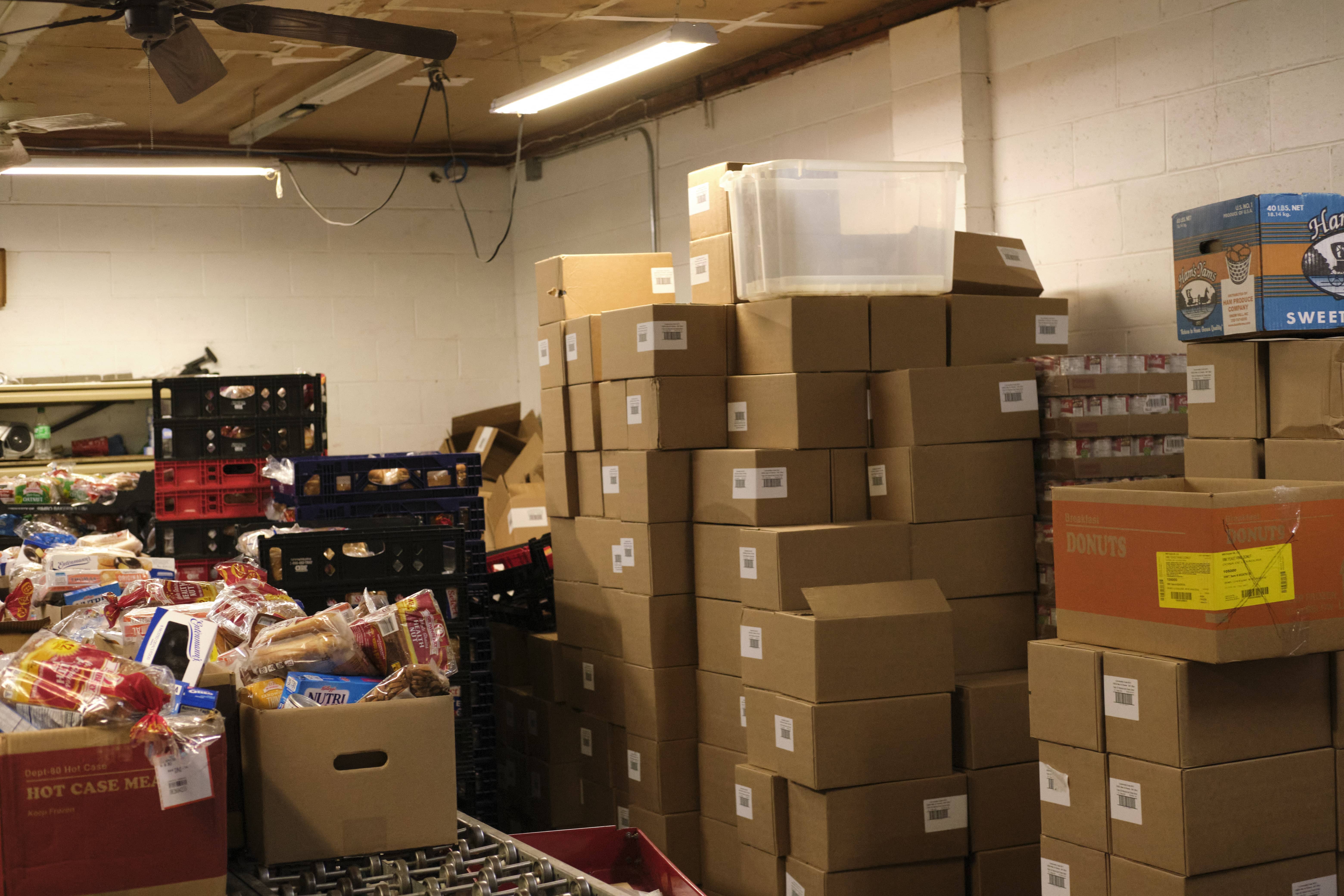
The rest of the contents of the tour and interview that WMAY enjoyed with the volunteers of St. Martin de Porres can be found below.
WMAY: Thank you for taking the time to speak with me and have me visit today; before we begin speaking as it concerns St. Martin de Porres Food Pantry and other related topics, would you tell me a bit about yourself and your own background and what brought you to work with the cause?
JB: I worked for 38 years for the state of Illinois as a disability adjudicator. When I retired in January 2015 I had two blissful months before my wife told me I had to find something to do outside of the house.
Jim Corredato asked me if I wanted to volunteer one day a week, Tuesdays, at St Martin de Porres. My wife said yes. One thing led to another (the guy who was in charge had a bad back and bad heart and asked me to drive the truck. Then he asked me if I knew how to run a computer. Then he left a post-it note for me “God bless you Bert, I quit.”
WMAY: Do you find that people often misunderstand the basic differences and functions of food banks and food pantries? Furthermore, please explain how much you all do here for the people of Springfield each week.
JB: The federal government provides “commodities” which is essentially free food items, of which go to the various food banks. The food banks then divide up the commodities to food pantries which are basically “commodity brokers.”
This means we can handle huge amounts of food, and that we allow people to come to the pantry “at least once per month.” One such commodity of the previous two months is almonds. To date, we have distributed about five tons of almonds to people in the past two months. Other commodities this month are mac and cheese, tomato paste and spaghetti sauce, salmon, and whole chickens.
We provide around 450 families – plus individuals – with a fifty or more pound box of food once per week each and every week.
WMAY: What could the community, local, state and federal governments do to assist organizations like the food pantry and other related religious and secular organizations in diminishing the number of individuals that require your services?
JB: We have a relationship with the Salvation Army and other organizations regarding picking up food from food establishments. The food bank also picks up food from the grocery stores and distributes that food to food pantries as well sometimes; it is all very complex.
WMAY: As food insecurity becomes more widely discussed across Springfield and the United States, the concept of “food as a utility” has become an increasingly popular idea, and movement across the country – as the amount of food available is unevenly distributed across communities across the country and greater world. Would this innovation – in your estimation – help those who find themselves seeking assistance from private and public groups such as yourself?
JB: Food insecurity is based on a number of issues. Cost is definitely an issue, rather than availability. But transportation, lack of utilities, and both unassisted mental and physical illness or ailments are also factors.
Food as a utility too is based on so many factors that it is wholly difficult to say what exactly would happen. The rule of unintended consequences is very real in this movement. For instance, the bakers of Springfield are not only fantastic – but the stores are very generous. Requiring documentation of each loaf of bread would bring the current way – the whole system – to a screeching halt.
WMAY: How many of those who are without does the St. Martin de Porres Food Pantry aid across a week, month, and year? What could the community, local, state and federal governments do to assist organizations like the food pantry and other related religious and secular organizations in diminishing the number of individuals that require your services?
JB: Everyday fellows are our bread and butter. The Springfield area is unbelievably generous. We are approaching $200,000 in food purchases for St Martin de Porres in the past year. That money came from donations and fundraisers (the most recent was the Jewish Temple Christmas breakfast, before that was the Illinois Pickleball Association tournament). Then there are the everyday donations we receive from people, money, clothes and food. The operation is immense, but we continue on thanks to the generosity of the people.
WMAY: Any special events or announcements or innovations that you’d like to alert the public to?
JB: Got a call just the other day from the home builders association, who have their show in February at the convention center. They collect cans of food for us every year. We appreciate the kids who donate at the city basketball tournament, and we appreciate the fundraisers.
Anyone who would like to volunteer some of their time is always welcome; we provide donuts and coffee as our perks – rivaling Google.
Our thanks to Bert, Helen, as well as to the rest of the entire staff of St. Martin De Porres Food Pantry for all of their time and dedication.

